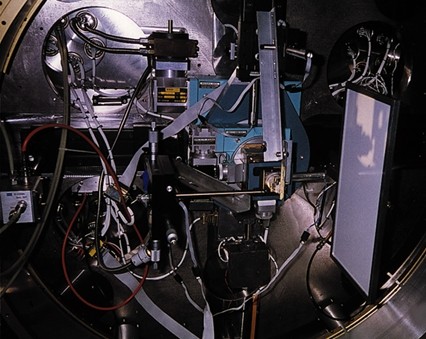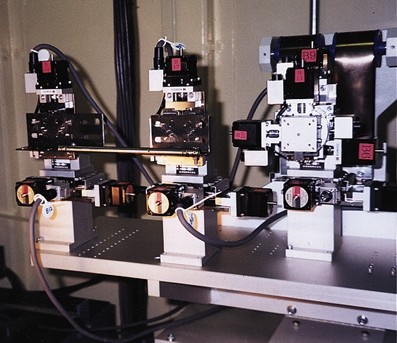
 |
AXCO is now producing a range of monocapillary optics for synchrotron beamline applications. These optics offer an excellent low-cost solution to endstation instrumentation without interfering with existing beamline vacuum chambers and upstream optics. Each optic is custom-made to the unique optical specifications for the beamline, taking into account input spectrum and flux distribution from upstream optics. AXCO synchrotron optics are single-reflection, full-complement toroidal mirrors using either paraboloidal or ellipsoidal focussing geometry.
Applications
|
Protein crystallography endstation optics For high-resolution protein microcrystallography, it is desirable to maximise intensity across a small specimen area (typically 0.1mm diameter) with minimal increase in divergence. As the available beam at most endstations is often much greater than this size, a monocapillary optic can be employed to focus a larger cross-section of flux within a specified divergence constraint. Typically, input beams in the range 0.3-1mm diameter can be cylindrically focussed with output focal lengths of 300-500mm to yield more than tenfold increases in flux intensity at the focal point with minimum cell-edge resolution of 800Å. As monocapillary focusing is non-dispersive, optics may be be used without modification or realignment for multiple-anomalous dispersion (MAD) work over the typically used range of X-ray energies. Complete protein crystallography endstation optical system including two X-Y optical micropositioning stages and integral He-atmosphere attachments |
 |
 |
Microbeam analysis optics Both focusing and conventional (beam-condensing) monocapillary optics offer several advantages for microbeam production. As these optics are non-dispersive, wavelength-tunable beamlines can maintain a fixed specimen position. The use of a cylidrincally symmetric reflection-focusing geometry overcomes the requirement of high spatial coherence in the incident beam (or high source emittance) imposed by refractive focusing optics, facilitating the use of bending-magnet or wiggler beamlines for microbeam stations. Focusing monocapillary optics demonstrating focal flux gains up to 1000x input intensity have been produced with output focal lengths in the range 10 - 50mm and unapertured focal FWHM¹s of 20-40 microns when used with bending magnet sources and no other focusing optics. The use of upstream focusing/collimation or aperturing near the focal point will produce even narrower beam foci with bend-magnet sources, as per higher emittance sources. AXCO focusing optics have also demonstrated high focusing efficiency with X-ray energies up to 50 keV. Beams can be further reduced in diameter by the use of condensing monocapillary optics, either used in conjunction with with focusing optics or separately. 250mm paraboloid in microdiff rig at KEK-PF |
|
White-beam optics Our optics also have the highest observed reflection efficiency of any kind of X-ray mirror optic in the world, with 100% of the theoretical Fresnel efficiency (often near-100% of actual incident flux reflected) being measured at energies below 20 keV in some cases. This means that our optics may be used in high heat-load applications at 3-gen undulator beamlines where the primary harmonic is the source of most heating. The use of a cylindrically-symmteric optic also avoids lateral beam movement under optic heating. Our achromatic focusing monocapillaries are ideal for for microfluorescence analysis and Laue diffraction. 300mm long-focus paraboloid at white-beam station at SPring-8 |
 |
More information
Please request further information regarding the suitability of monocapillary optics to your specific beamline and analysis application. For an explanation of the design factors required see our design criteria.